- The Benefits of Bell Peppers
- Why Bell Peppers are Good for You
- Rich in Vitamins
- High in Antioxidants
- Low in Calories
- Good for Eye Health
- Supports Heart Health
- Versatile and Delicious
- Nutritional Value of Bell Peppers
- Vitamins
- Minerals
- Antioxidants
- Fiber
- Low in Calories and Fat
- Conclusion
- Choosing Bell Peppers
- 1. Color
- 2. Shape and Size
- 3. Firmness
- 4. Weight
- 5. Organic vs. Non-organic
- How to Select Ripe and Fresh Bell Peppers
- Choosing the Best Bell Pepper Colors
- Green Bell Peppers
- Red Bell Peppers
- Yellow Bell Peppers
- Orange Bell Peppers
- Purple, Brown, and White Bell Peppers
- The Different Varieties
- 1. Green Bell Peppers
- 2. Red Bell Peppers
- 3. Yellow Bell Peppers
- 4. Orange Bell Peppers
- 5. Purple Bell Peppers
- 6. Chocolate Bell Peppers
- 7. White Bell Peppers
- 8. Miniature Bell Peppers
- 9. Sweet Bell Peppers
- Green Bell Peppers
- Red Bell Peppers
- Nutritional Value
- Uses
- Selection and Storage
- Conclusion
- Yellow Bell Peppers
- “Question-Answer”
- What are the best varieties of bell peppers?
- What is the difference between red, yellow, orange, and green bell peppers?
- Which variety of bell pepper is the sweetest?
- Are there any spicy varieties of bell peppers?
- Can you eat bell peppers raw?
- What are some ways to cook bell peppers?
- “Video” The 5 Major Pepper Species – Grow Interesting Pepper Varieties – Pepper Geek
When it comes to cooking, bell peppers are a versatile and delicious ingredient that can add flavor and vibrant color to any dish. However, with so many different varieties available, it can be overwhelming to choose the perfect pepper for your recipe. Whether you’re looking for a mild and sweet pepper or a spicy and tangy option, this guide will help you navigate the world of bell peppers and find the best varieties for your culinary needs.
One of the most popular and widely available bell pepper varieties is the traditional green bell pepper. With its mild flavor and crisp texture, it is a versatile option that can be used in a variety of recipes. Green bell peppers are great for sautéing, stuffing, or slicing into salads and sandwiches. They also make a perfect addition to stir-fries and fajitas.
If you’re looking for a sweeter and more colorful bell pepper option, the red bell pepper is a great choice. Red bell peppers have a slightly sweeter taste than green bell peppers and are packed with essential nutrients like vitamin C and vitamin A. They are perfect for roasting, grilling, or enjoying raw in salads, wraps, and snacks. The red color also adds a beautiful pop of color to any dish, making it a visually appealing choice.
For those who enjoy a little heat in their dishes, the yellow or orange bell pepper is the way to go. With a slightly spicier flavor than green and red bell peppers, yellow and orange varieties add a tangy kick to any recipe. They are perfect for incorporating into spicy sauces, salsas, and stir-fries. The vibrant colors also make them a great choice for adding visual interest to your dishes.
In conclusion, when it comes to choosing the perfect bell pepper for your cooking needs, consider the flavor, color, and spiciness level you desire. Green bell peppers are a versatile option for any recipe, while red bell peppers offer a sweeter taste and bold color. If you’re craving some heat, go for the yellow or orange bell pepper. With these options, you can easily find the best variety to enhance the taste and visual appeal of your dishes.
The Benefits of Bell Peppers
Bell peppers, also known as sweet peppers, are not only delicious but also packed with nutrients. Here are some of the benefits of including bell peppers in your diet:
- Rich in Vitamins: Bell peppers are an excellent source of vitamins, especially vitamin C. In fact, they contain more vitamin C than oranges. Vitamin C is essential for a healthy immune system and can help protect against common illnesses.
- High in Antioxidants: Bell peppers contain various antioxidants, such as beta-carotene and quercetin. These antioxidants can help protect your cells from damage caused by harmful free radicals and reduce the risk of chronic diseases.
- Good for Eye Health: The vibrant colors of bell peppers indicate the presence of carotenoids, such as lutein and zeaxanthin, which are beneficial for eye health. These carotenoids can help prevent age-related macular degeneration and cataracts.
- Nutrient Dense: Apart from vitamin C, bell peppers also contain other essential nutrients such as vitamin A, vitamin B6, vitamin K, and folate. They are also low in calories and a good source of dietary fiber.
- May Aid in Weight Loss: Bell peppers are low in calories and high in fiber, making them a great addition to a weight loss diet. The fiber helps you feel full and satisfied, reducing the chances of overeating.
- Heart-Healthy: Bell peppers are rich in potassium, which is essential for maintaining a healthy heart and blood pressure. They also contain a compound called capsaicin, which can help reduce cholesterol levels and improve blood circulation.
Incorporating bell peppers into your meals is a delicious way to boost your nutrient intake and support your overall health. Whether you prefer red, green, yellow, or orange bell peppers, they bring a delightful crunch and a range of health benefits to your plate.
Why Bell Peppers are Good for You
Bell peppers are not only delicious but also packed with nutrients that are beneficial for your health. Here are some reasons why bell peppers should be included in your diet:
Rich in Vitamins
Bell peppers are an excellent source of vitamins A and C. Vitamin C is known for its antioxidant properties and its ability to boost immune system function. Vitamin A is essential for good vision and healthy skin.
High in Antioxidants
Bell peppers contain a high amount of antioxidants, including flavonoids and carotenoids. These antioxidants help protect your cells from damage caused by harmful free radicals, reducing the risk of chronic diseases such as cancer and heart disease.
Low in Calories
If you are watching your weight, bell peppers are a great choice. They are low in calories, making them an ideal snack or addition to your meals. Additionally, bell peppers are high in fiber, which can help you feel fuller for longer and prevent overeating.
Good for Eye Health
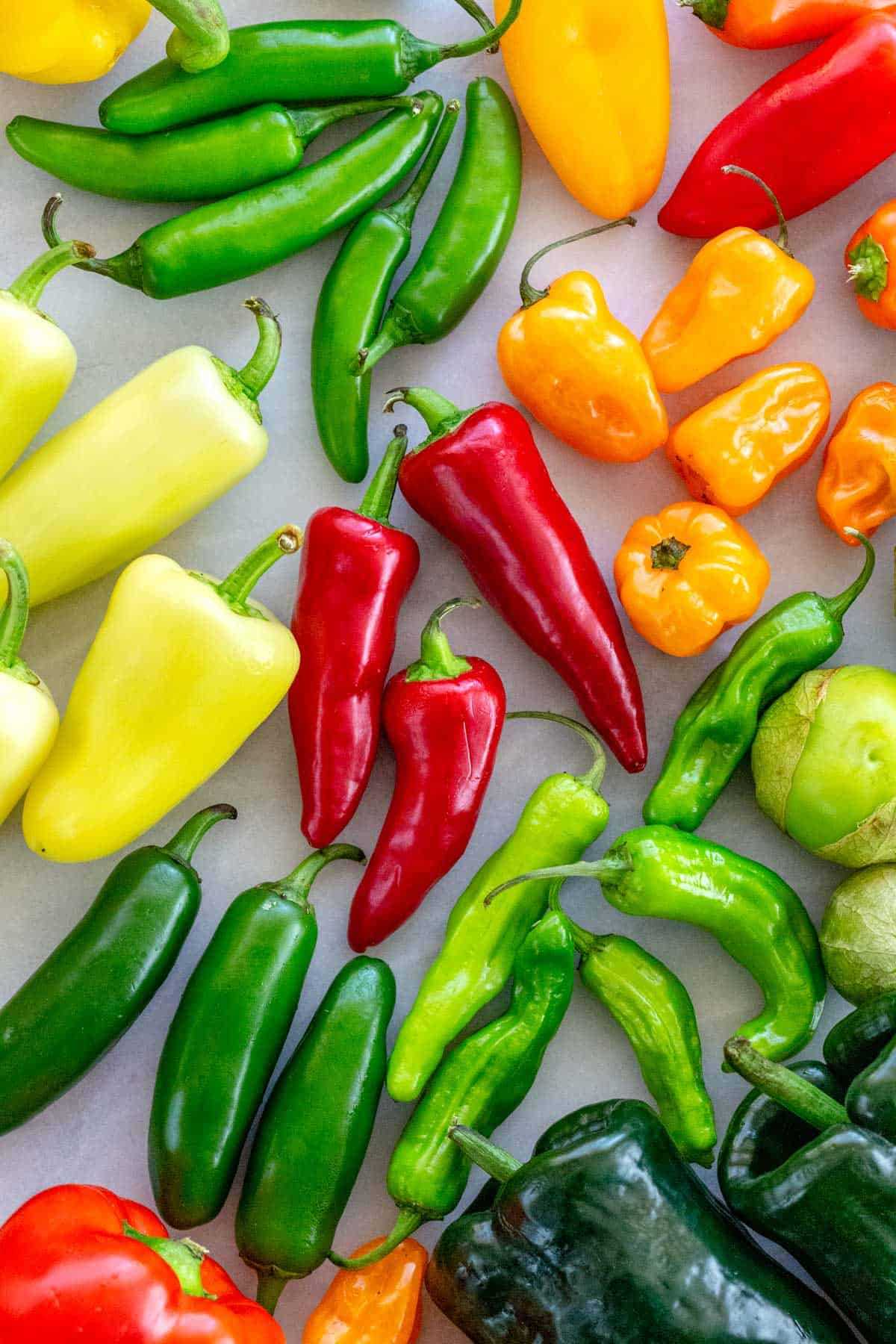
As mentioned earlier, bell peppers are rich in vitamin A, which is essential for good vision. Consuming bell peppers regularly can help maintain eye health and reduce the risk of age-related macular degeneration and cataracts.
Supports Heart Health
The antioxidants found in bell peppers, particularly the carotenoids, are beneficial for heart health. Studies have shown that a high intake of carotenoids is associated with a lower risk of heart disease. Additionally, bell peppers are low in sodium and high in potassium, which helps maintain healthy blood pressure levels.
Versatile and Delicious
Aside from their numerous health benefits, bell peppers are also incredibly versatile. They can be enjoyed raw in salads, stuffed with various fillings, or roasted and added to a variety of dishes. Their sweet and crunchy flavor adds depth to any recipe.
| Benefits | Description |
|---|---|
| High in vitamins | Vitamin A for vision and Vitamin C for immune system |
| Rich in antioxidants | Protects cells against damage |
| Low in calories | Good for weight management |
| Supports eye health | Reduces risk of eye diseases |
| Good for heart health | Lower risk of heart disease |
With their incredible nutritional profile and delicious taste, bell peppers are an excellent addition to any diet. Whether you’re looking to improve your overall health or simply add more flavor to your meals, bell peppers are a versatile and tasty choice.
Nutritional Value of Bell Peppers
Bell peppers are not only delicious, but they also offer a variety of nutritional benefits. Here is a breakdown of their nutritional value:
Vitamins
Bell peppers are packed with essential vitamins. They are an excellent source of vitamin C, which helps boost the immune system and promote healthy skin. They also contain significant amounts of vitamins A and E, which are vital for healthy eyesight and overall cell function.
Minerals
In addition to vitamins, bell peppers also provide an array of minerals. They are particularly high in potassium, which is important for maintaining healthy blood pressure levels. Bell peppers also contain magnesium, which supports cardiovascular health, and iron, which helps transport oxygen throughout the body.
Antioxidants
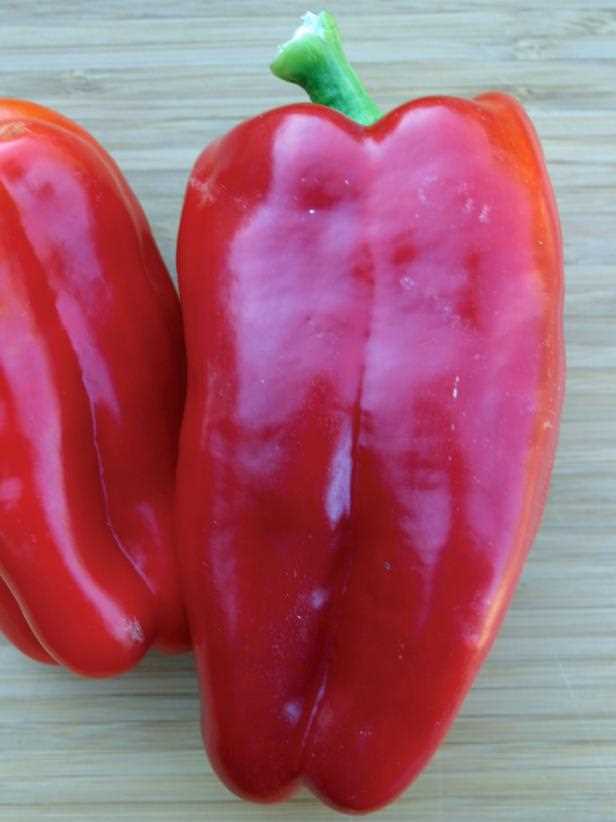
Bell peppers are rich in antioxidants, which help protect the body against free radicals and oxidative stress. The vibrant colors of bell peppers indicate the presence of important antioxidants such as beta-carotene, lutein, and zeaxanthin. These antioxidants play a crucial role in preventing chronic diseases and promoting general well-being.
Fiber
Bell peppers are an excellent source of fiber, which supports digestion and helps maintain a healthy weight. The high fiber content in bell peppers contributes to feelings of fullness and can aid in weight management. Fiber is also important for maintaining a healthy gut and preventing constipation.
Low in Calories and Fat
One of the great advantages of bell peppers is that they are low in calories and fat. They can be a great addition to any diet, especially for those looking to lose or maintain weight. Bell peppers offer a satisfying crunch and sweetness without the excess calories and fat found in many other snack options.
Conclusion
When it comes to nutritional value, bell peppers are a real powerhouse. They are packed with vitamins, minerals, and antioxidants while being low in calories and fat. Whether eaten raw, cooked, or added to various dishes, bell peppers are a delicious and nutritious addition to any diet.
Choosing Bell Peppers
When it comes to choosing bell peppers, there are a few factors to consider. The color, shape, and size of the pepper can all affect its taste and texture. Here are some tips to help you make the best choice:
1. Color
Bell peppers come in a variety of colors, including green, red, yellow, orange, and even purple. Each color has its own distinct flavor and nutritional benefits. Green peppers are slightly bitter and crunchier, while red and yellow peppers are sweeter and softer. Choose the color based on your preference and the recipe you are using.
2. Shape and Size
Bell peppers can vary in shape and size. Some are long and slender, while others are round and squat. The shape and size can affect the texture and cooking time of the pepper. For example, smaller peppers may cook faster and have a milder flavor, while larger peppers can be stuffed and baked. Consider the intended use of the pepper when choosing its shape and size.
3. Firmness
When selecting a bell pepper, give it a gentle squeeze. It should feel firm and have a slight give without being soft or mushy. Avoid peppers that have wrinkles, soft spots, or blemishes, as they may be overripe or spoiled.
4. Weight
If you have the option to choose between peppers of different sizes, pick them up and compare their weight. A heavier pepper is generally a sign of juiciness and freshness. However, keep in mind that larger peppers will naturally be heavier due to their size.
5. Organic vs. Non-organic
Consider choosing organic bell peppers if you are concerned about pesticides and prefer a more environmentally friendly option. Organic peppers are grown without synthetic pesticides, herbicides, or fertilizers. However, they may be more expensive than conventionally grown peppers.
Remember, the best bell pepper for you will ultimately depend on your personal preferences and the specific dish you plan to make. Use this guide as a starting point to help you choose the perfect pepper for your needs.
How to Select Ripe and Fresh Bell Peppers
Choosing ripe and fresh bell peppers is essential to ensure the best flavor and texture in your recipes. Follow these tips to select the perfect pepper:
- Observe the color: Look for bell peppers that have a bright, vibrant color. Depending on the variety, the ideal color may be green, red, yellow, orange, or even purple. The pepper should have a uniform color without any blemishes or spots.
- Check the firmness: Gently squeeze the pepper to check its firmness. It should feel firm but not too hard. Avoid peppers that feel soft or have wrinkled skin, as they may be overripe or beginning to spoil.
- Examine the skin: The skin of a ripe bell pepper should be smooth and shiny. Avoid peppers with dull or wrinkled skin, as they may be older and less fresh.
- Inspect the stem: The stem should be green and firmly attached to the pepper. Avoid peppers with dry or shriveled stems, as they may be older and less fresh.
- Consider the size and shape: Choose bell peppers that are plump and have a symmetrical shape. Avoid peppers that are overly large or have irregular shapes, as they may have an uneven ripeness or texture.
Remember, fresh bell peppers should have a crisp texture and a sweet, slightly tangy flavor. By following these guidelines, you can ensure that you select the ripest and freshest bell peppers for your next dish.
Choosing the Best Bell Pepper Colors
When it comes to bell peppers, there are a variety of colors to choose from. Each color represents a different level of ripeness and flavor. Here’s a guide to help you choose the best bell pepper colors for your cooking:
Green Bell Peppers
Green bell peppers are the most common and widely available variety. They are harvested when they are still unripe and have a slightly bitter taste compared to other colors. Green bell peppers are crisp and crunchy, making them perfect for salads, stir-fries, and grilling.
Red Bell Peppers
Red bell peppers are fully ripe and have a sweet, tangy flavor. They are the sweetest and most flavorful of all the bell pepper colors. Red bell peppers also have a softer texture and are great for roasting, stuffing, or eating raw in salads.
Yellow Bell Peppers
Yellow bell peppers are also fully ripe and have a sweet, mellow flavor. They are slightly less sweet than red bell peppers but still have a delicious taste. Yellow bell peppers are versatile and can be used in a variety of dishes such as fajitas, stir-fries, and pasta dishes.
Orange Bell Peppers
Orange bell peppers are a slightly less common variety but still offer a great flavor. They have a sweet and slightly fruity taste that is similar to red and yellow bell peppers. Orange bell peppers add a pop of color to dishes and can be used in salads, sandwiches, and salsas.
Purple, Brown, and White Bell Peppers
Purple, brown, and white bell peppers are rarer varieties that offer a unique flavor and appearance. Purple bell peppers have a slightly spicy taste, while brown and white bell peppers are milder and have a slightly sweeter flavor. These unique colors can be used in a variety of dishes to add visual interest.
When choosing bell pepper colors, consider the flavors you enjoy and the dish you are preparing. Each color offers a different taste and texture, so experiment with different colors to find your favorites. Whether you prefer the bitterness of green bell peppers or the sweetness of red bell peppers, there is a bell pepper color to suit every palate.
The Different Varieties
1. Green Bell Peppers
Green bell peppers are the most common and widely available variety. They have a slightly bitter flavor and are often used in savory dishes like stir-fries, salads, and sandwiches. Green bell peppers are harvested before they fully ripen and turn red, which gives them their characteristic green color.
2. Red Bell Peppers
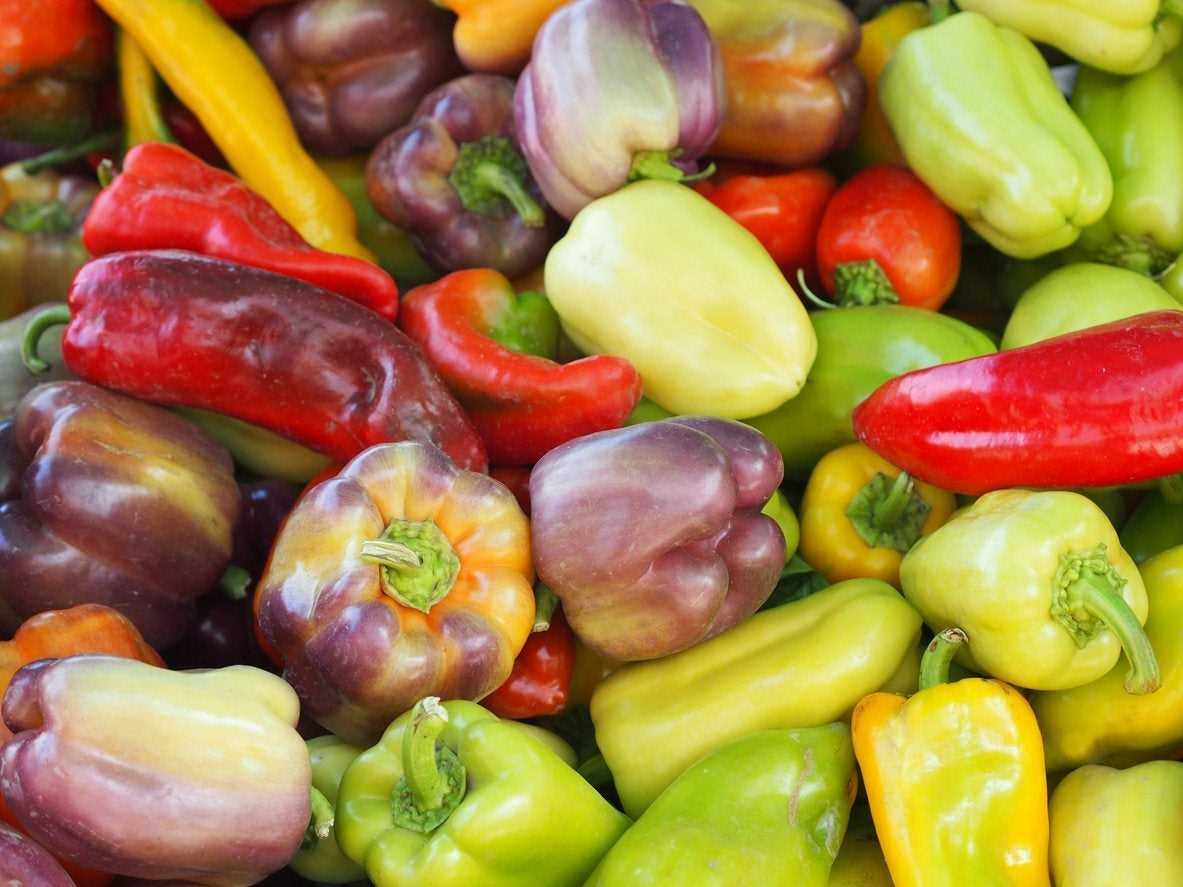
Red bell peppers are fully ripened green peppers that have a sweeter and milder flavor. They are often used in roasted and grilled dishes, as well as in sauces, soups, and stews. The vibrant red color of these peppers adds visual appeal to any dish.
3. Yellow Bell Peppers
Yellow bell peppers have a mild and slightly sweet flavor. They are commonly used in salads, stir-fries, and salsas, as well as in cooked dishes like fajitas and stuffed peppers. The bright yellow color of these peppers adds a pop of color to any recipe.
4. Orange Bell Peppers
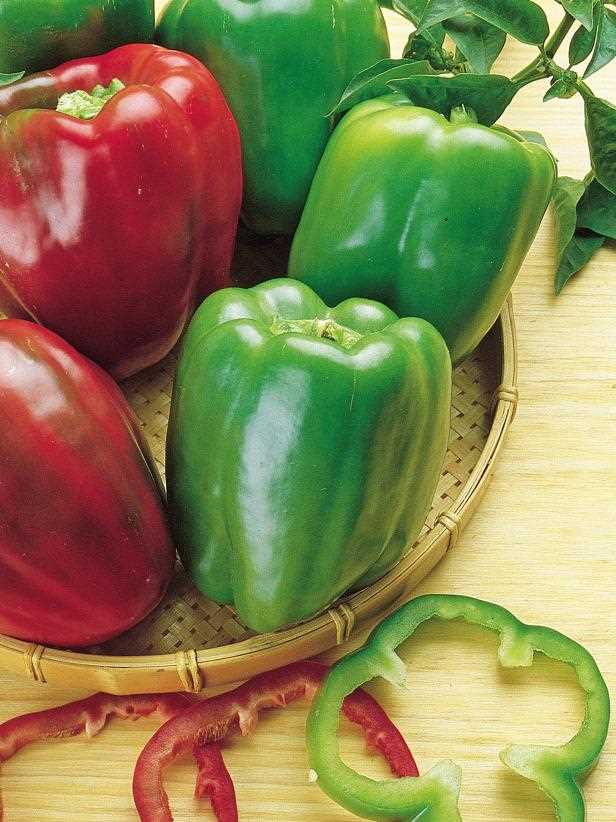
Orange bell peppers have a sweet and fruity flavor that is milder than red and yellow peppers. They work well in a variety of dishes, including sautés, stir-fries, and even as a topping for pizzas. The vibrant orange color of these peppers makes them visually appealing in any recipe.
5. Purple Bell Peppers
Purple bell peppers have a slightly sweeter and milder flavor compared to green peppers. They are often used in salads, roasted dishes, and stuffed peppers. The deep purple color of these peppers adds a unique touch to any meal.
6. Chocolate Bell Peppers
Chocolate bell peppers have a rich and sweet flavor with a hint of bitterness. They are often used in cooked dishes like sauces, stews, and soups, as well as in roasted and grilled dishes. The deep brown color of these peppers adds a unique and earthy element to recipes.
7. White Bell Peppers
White bell peppers have a mild and slightly tangy flavor. They are commonly used in raw dishes like salads and salsas, as well as in cooked dishes. The creamy white color of these peppers can provide a striking contrast in recipes.
8. Miniature Bell Peppers
Miniature bell peppers are small-sized versions of regular bell peppers. They come in a variety of colors, including red, yellow, orange, and green. These bite-sized peppers are perfect for snacking, stuffing, and adding to salads for a burst of flavor and color.
9. Sweet Bell Peppers
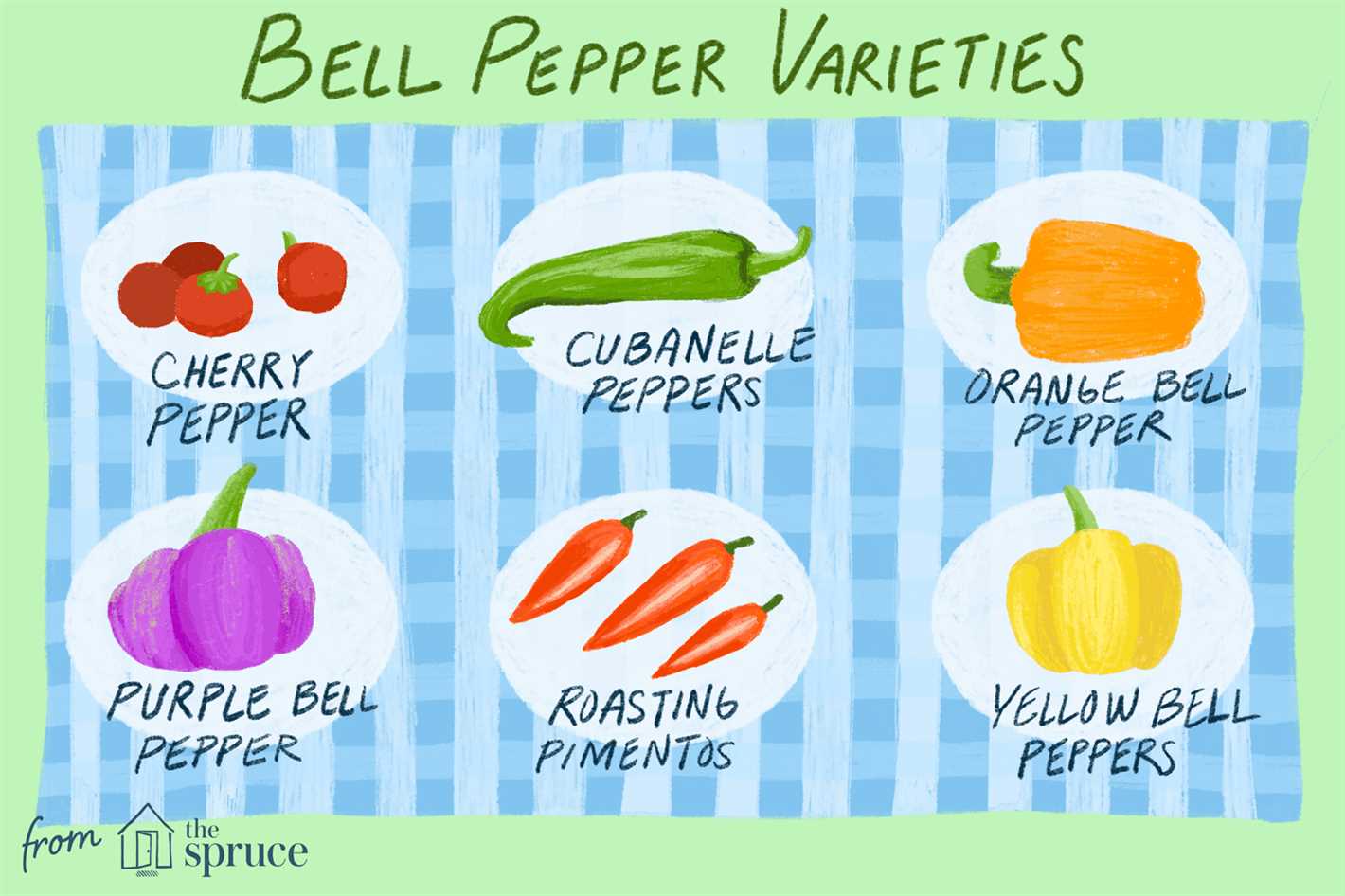
Sweet bell peppers are a general category that includes various colors of peppers with a milder and sweeter flavor compared to other varieties. They are often used in salads, stir-fries, and sautés, as well as in cooked dishes. The sweetness of these peppers pairs well with a variety of ingredients.
With so many different varieties to choose from, you can experiment with flavors, colors, and textures to find the perfect bell pepper for every recipe.
Green Bell Peppers
Green bell peppers are a popular variety of bell peppers and are widely available in most grocery stores. They are harvested before they fully ripen, resulting in their green color. Green bell peppers have a crisp texture and a mild, slightly tangy flavor.
Benefits of Green Bell Peppers:
- High in vitamin C: Green bell peppers are an excellent source of vitamin C, which is essential for a healthy immune system and strong connective tissues.
- Good source of antioxidants: Antioxidants help protect your cells from damage and may reduce the risk of chronic diseases.
- Low in calories: Green bell peppers are low in calories, making them a great addition to a healthy diet.
- High in fiber: Fiber is important for digestive health and can help you feel fuller for longer.
How to select and store Green Bell Peppers:
- Choose peppers that are firm, shiny, and have a vibrant green color.
- Avoid peppers that have soft spots or wrinkled skin.
- Store green bell peppers in a plastic bag in the refrigerator for up to one week.
- Do not wash the peppers until you are ready to use them.
Ways to use Green Bell Peppers:
- Slice them and add them to salads for a refreshing crunch.
- Use them as a topping for pizzas or sandwiches.
- Stuff them with a filling of your choice, such as rice and ground meat, and bake them for a delicious meal.
- Include them in stir-fries or sautés for added flavor and texture.
Conclusion:
Green bell peppers are a versatile and nutritious vegetable that can be enjoyed in a variety of dishes. They offer numerous health benefits and are easy to incorporate into your diet. Whether you prefer them raw or cooked, green bell peppers are a delicious addition to any meal.
Red Bell Peppers
Red bell peppers are a popular variety of bell peppers that are loved for their sweet and slightly fruity flavor. They are a vibrant red color, which makes them a visually appealing addition to any dish. Whether you use them raw in salads or cook them into your favorite recipes, red bell peppers are sure to add a delicious taste and vibrant color to your meals.
Nutritional Value
Red bell peppers are not only tasty but also packed with nutrients. They are an excellent source of vitamin C, providing more than double the amount found in green bell peppers. Vitamin C is known for its immune-boosting properties and can help protect against common illnesses like colds and flu. Red bell peppers also contain a good amount of vitamins A and B6, as well as potassium and fiber.
Uses
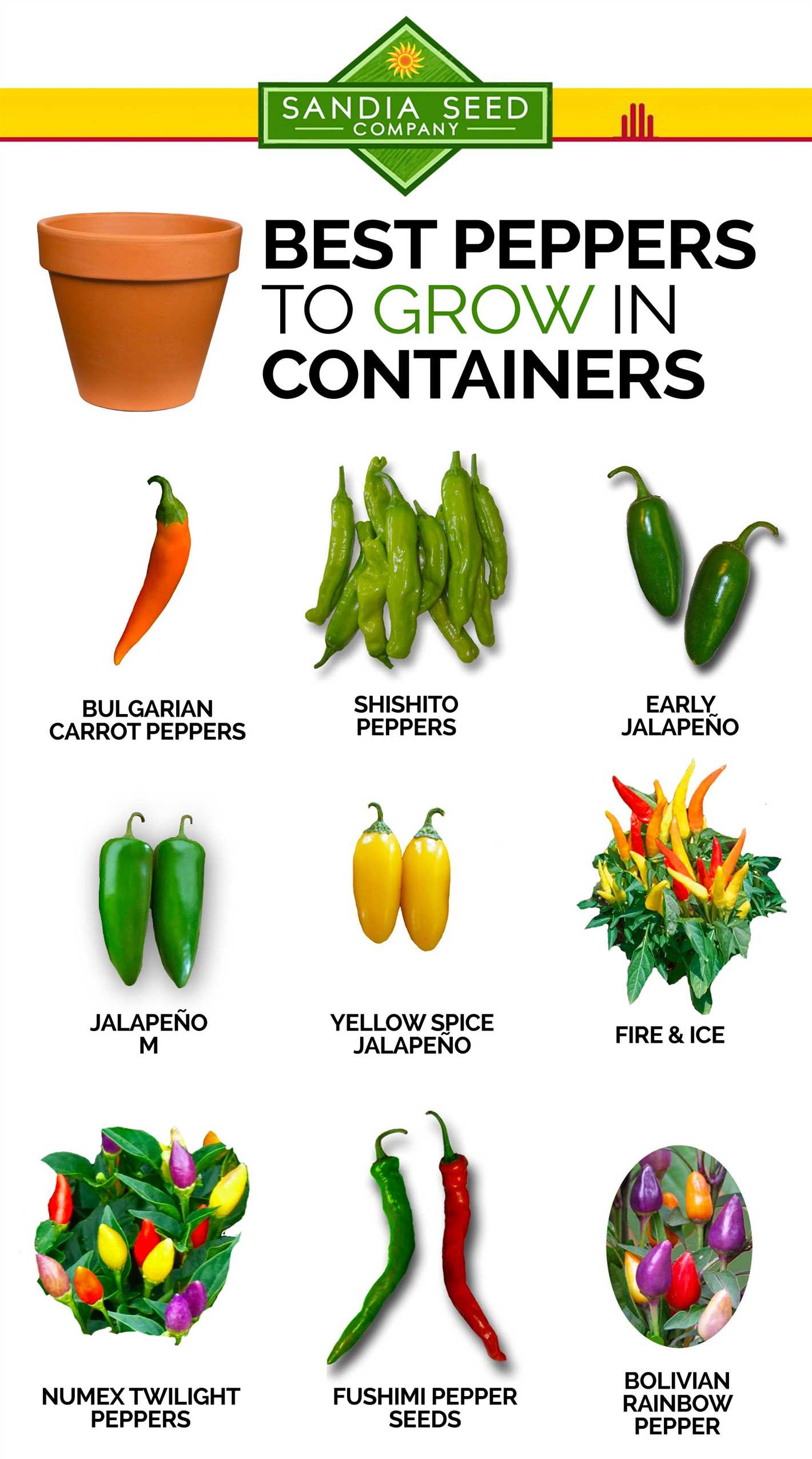
Red bell peppers can be used in a variety of ways in the kitchen. They are delicious when eaten raw and can be sliced and added to salads, sandwiches, or wraps for an extra crunch and sweetness. They can also be grilled, roasted, or sautéed for a softer texture and enhanced flavor. Red bell peppers are a great addition to stir-fries, pasta dishes, and soups, as their sweet taste complements savory ingredients.
Some popular recipes that feature red bell peppers include stuffed bell peppers, roasted red pepper hummus, and red pepper soup. Their vibrant color also makes them a great ingredient for garnishing and adding a pop of color to your dishes.
Selection and Storage
When selecting red bell peppers, look for peppers that are firm, glossy, and vibrant in color. Avoid peppers that have blemishes, soft spots, or are wrinkled. The stem should be green and fresh-looking. Red bell peppers can be stored in the refrigerator for up to a week, but their flavor and nutritional value are best when used within a few days of purchase.
Conclusion
Red bell peppers are a delicious and nutritious addition to any meal. Their sweet and fruity flavor, vibrant color, and versatility in the kitchen make them a popular choice for many recipes. Whether you enjoy them raw or cooked, red bell peppers are a tasty way to add flavor and visual appeal to your dishes.
Yellow Bell Peppers
Yellow bell peppers are a popular and vibrant variety of bell peppers that have a sweet and slightly tangy flavor. They are a nutritious addition to any meal and can be enjoyed raw or cooked in a variety of recipes. Here are some reasons why yellow bell peppers are a great choice:
- Colorful and attractive: Yellow bell peppers add a pop of bright and sunny color to any dish, making them visually appealing.
- Sweet and tangy flavor: Yellow bell peppers have a milder and sweeter taste compared to green bell peppers. They also have a subtle tanginess that adds depth to dishes.
- Rich in nutrients: Yellow bell peppers are packed with vitamins and minerals. They are an excellent source of vitamin C, which helps boost the immune system and promote healthy skin.
- Low in calories: Yellow bell peppers are a low-calorie vegetable, making them a great addition to a balanced diet. They are also high in fiber, which aids in digestion.
Yellow bell peppers can be used in a variety of dishes, including salads, stir-fries, soups, and roasted vegetable medleys. They can be stuffed, grilled, or added to sauces and salsas for added flavor and texture.
When selecting yellow bell peppers, look for ones that are firm, shiny, and free from blemishes. Avoid peppers that have wrinkled skin or soft spots. Store them in the refrigerator in a plastic bag to keep them fresh for longer.
| Nutrient | Amount per 1 medium-sized pepper (186g) |
|---|---|
| Calories | 50 |
| Protein | 1g |
| Fat | 0g |
| Carbohydrates | 12g |
| Fiber | 3g |
| Vitamin C | 152% of the daily recommended intake |
| Vitamin A | 25% of the daily recommended intake |
| Potassium | 6% of the daily recommended intake |
Include yellow bell peppers in your diet for their vibrant color, sweet flavor, and nutritional benefits. They are sure to add a burst of sunshine to your dishes and provide a healthy dose of vitamins and minerals.
“Question-Answer”
What are the best varieties of bell peppers?
The best varieties of bell peppers include red, yellow, orange, and green bell peppers.
What is the difference between red, yellow, orange, and green bell peppers?
The main difference between red, yellow, orange, and green bell peppers is their ripeness. Green bell peppers are the least ripe and have a slightly bitter taste. As they ripen, they turn yellow, then orange, and finally red, becoming sweeter and more flavorful.
Which variety of bell pepper is the sweetest?
The sweetest variety of bell pepper is the red bell pepper, as it is fully ripe and has a rich, sweet flavor.
Are there any spicy varieties of bell peppers?
Yes, there are spicy varieties of bell peppers, such as the hot jalapeno pepper or the fiery habanero pepper.
Can you eat bell peppers raw?
Yes, bell peppers can be eaten raw and are often enjoyed in salads, sandwiches, or as a crunchy snack.
What are some ways to cook bell peppers?
There are many ways to cook bell peppers, including grilling, sautéing, roasting, stuffing, or adding them to stir-fries or pasta dishes.







